ELECTRIC, WITH AN EDGE
Ever since the pandemic, the abundance of generator step-up transformers continues to grow as more and more customers demand them. In this article, you will learn everything about the generator step-up transformer configurations, generator step-up transformer specifications, and generator transformer connections as well.
With the professional help of DAELIM, one of the top generator step-up transformer manufacturers in China, you will be able to completely understand what this electrical device is capable of.
Moreover, DAELIM also aims to help you with your purchase decision.
But instead of directly going through the information of what generator step-up transformers are, it is important to learn the fundamentals of what a transformer is first.
This is to prevent confusion as you read along with the article.
Two Decades of Excellence: With over 20 years in national transformer projects, Daelim stands as a testament to longevity and trust in the industry.
Diverse Product Portfolio: From Pad Mounted Transformers to HV Power Transformers, Daelim offers a solution for every need, ensuring consumers don’t have to look elsewhere.
Custom Solutions: Recognizing the unique requirements of different industries, Daelim prides itself on delivering tailored transformer solutions.
International Standards Adherence: Whether it’s IEEE, IEC, or any other standard, Daelim’s transformers meet and often exceed the required specifications.
Global Outreach: Serving customers from Asia to Europe, Daelim’s international presence underscores its commitment to quality and excellence worldwide.
Innovation at its Core: Continuously improving transformer structures and introducing advanced production technologies, Daelim stays at the forefront of the industry’s innovations.
Trusted Reputation: As one of the earliest transformer traders, Daelim has garnered trust by consistently delivering high-quality and affordable solutions.
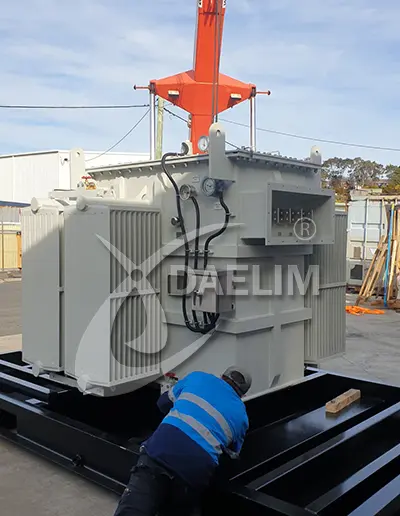
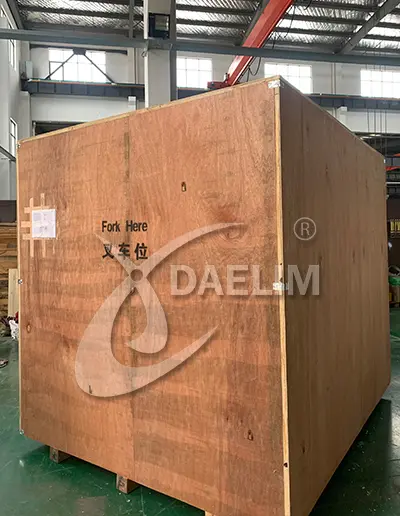
In the realm of power transformation, the choices you make today dictate the efficiency and reliability of your operations tomorrow. With Daelim, you're not just choosing a transformer; you're investing in two decades of industry-leading expertise and innovation. Our diverse product portfolio, tailored to meet the exacting needs of varied industries, is a testament to our commitment to excellence. Whether you're navigating the complex landscape of international standards or seeking a partner with a global footprint, Daelim emerges as the unequivocal choice. Dive into our world, where innovation meets reliability, and let's power the future together.
In today’s ever-evolving energy sector, the demand for efficient and reliable power transformation has never been greater. Enter the world of the generator step up transformer, a pivotal component in ensuring energy is effectively transmitted from power generation sources to the main grid. At Daelim, with over 20 years of unparalleled experience, we understand the nuances and intricacies of this transformer type like none other.
Our broad range of generator step up transformers are not only tailored to meet the diverse needs of various industries but are also equipped with advanced features that ensure longevity and performance. Whether you’re looking for specific configurations or seeking information available in our comprehensive generator step up transformer wiki, Daelim is your go-to source. Our transformers, available for sale, are crafted with precision, meeting international standards such as IEEE, IEC, and more.
But why choose Daelim? Our reputation precedes us. As one of the foremost leaders in the transformer industry, our products are synonymous with quality, innovation, and efficiency. Our professional technical team is ever ready to assist, ensuring you get a solution perfectly aligned with your requirements. From our commitment to UL standards to our unwavering emphasis on after-sales service, with Daelim, you’re not just investing in a product but in a partnership that prioritizes your needs.
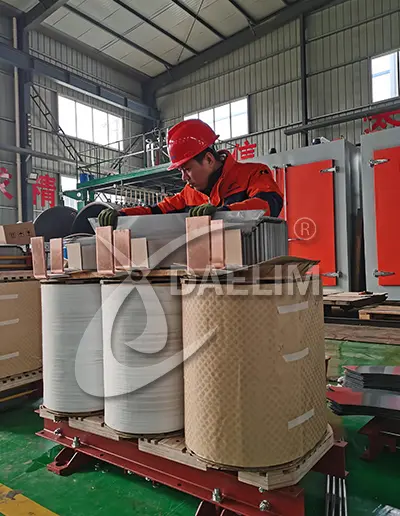
– Discover how transformers work, how to choose the right one for your project, and why custom power transformers are ideal. Read on!
-Power transformers in substations play a vital role in distributing electricity to their consumers, especially other transformer substation types. This article will provide you full details about this topic.
-The choice of the main transformer for petrochemical enterprises directly affects the power supply and consumption of the whole plant.
For starters, what actually is a transformer?
Transformers are basically electrical devices that has a history of utility since the early 1880s.
DAELIM is an expert transformer manufacturer from China that has been specializing in transformers of various types for decades now and there are several types of transformers out there with unique characteristics and abilities.
But in general, transformers are used for increasing low alternating current voltages, or most commonly known as “A.C”.
Increasing low A.C voltages are usually done by step-up transformers.
On the other hand, transformers are also capable of decreasing high A.C voltages at low current. This is normally done on step-down transformers.
In terms of the data when generator step-up transformers were invented, generator step-up transformers were basically invented in the modern era.
In today’s generation, an electrical generator is a device or machine that converts mechanical energy or motive power into electrical power for using an external circuit.
Mechanical energy has several sources, such as different kinds of turbines, (e.g., gas turbines, wind turbines, steam turbines, water turbines, etc.), internal combustion engines, hand cranks, and many more,
One of the first electromagnetic generators was invented back in the early 1830s, which means that they were invented first compared to transformers.
The first generator was known as the “Faraday Disk”, and it was invented by a British scientist named Michael Faraday.
The sole purpose of electric generators is to provide power for electric power grids.
When it comes to the reverse conversion of electrical energy into mechanical energy, this is basically done with the help of an electric motor.
Motors and generators also have plenty of similarities in terms of characteristics and abilities.
However, they do have their own unique or special features. For instance, there are many motors that can be mechanically driven to produce electricity.
They can also make acceptable manual generators as well.
Like transformers, electrical generators have different types as well with unique characteristics and functions.
A dynamo generator makes use of commutators to make a direct current.
In other words, a dynamo generator is self-excited, which means its field electromagnets are powered by the device’s own output.
Moreover, a dynamo generator is a D.C type.
Other D.C generator utilizes a separate source of direct current to energize their magnetic fields or field magnets.
A homopolar generator is a type of generator that is also D.C that compromises an electrically conductive disc or a cylinder rotating in a plane that is perpendicular to a uniform static magnetic field.
There is a potential difference created between the center of the disc and the rim.
Basically, the electrical polarity heavily depends on the direction of the rotation and the orientation of the field.
Moreover, this is also known as a unipolar generator, faraday disc, and several other names,
Normally, you can expect the voltage to be below, there are a few volts in the case of small demonstration models as well but large research generators are capable of producing hundreds of volts and even some systems have many generators in series that is able to produce larger voltages.
Although unusual since they have the ability to produce tremendous electric current, some are basically more than a million amperes because homopolar generators are designed to have low internal resistance.
A magnetohydrodynamic generator or M.H.D generator is basically a generator that directly extracts power from moving hot gases through a magnetic field.
Without the use of rotating electromagnetic machinery. M.H.D generators were originally made to output or exit the plasma M.H.D generator aflame.
This is to heat the boiler steam of a power plant.
The first practical design was the A.V.C.O Mk. 25, which was developed in the early 1960s.
The U.S government funded the substantial development of it that culminated in a 25 M.W demonstration plant in 1987.
The soviet union from 1972 until the late 1980s. The M.H.D plant U 25 was a regular utility operation in the Moscow power system with a rating of 25 MW.
This was also the largest M.H.D plant rating in the world during that time.
M.H.D generators also functioned as a topping cycle during that time and are known to be less efficient nowadays with fewer combined cycle gas turbines.
Induction generators have induction A.C motors which do not match the step-up transformer configurations and generator step-up transformer specifications since the generator transformer connection is different.
They are used as generators, turning mechanical energy into an electric current.
Induction generators function by mechanically converting their rotor faster than the synchronous speed.
The result of this gives a negative slip.
On the other hand, regular AC synchronous motors usually are used as a generator, without any modifications.
Induction generators are also useful in applications such as mini-hydropower plants and wind turbines or even high-pressure gas teams for the purpose of lowering the pressure.
This is because they can easily recover the energy with easy controls.
They do not require an exciter circuit at all because the rotating magnetic field is commonly provided by the induction from the stator circuit.
Moreover, they do not also require speed governor equipment because they can inherently operate at the connected grid.
When it comes to the operation, an induction generator is required and must be excited with a leading voltage and this is commonly done by connecting an electrical grind.
There are also instances that they are self-excited with the help of phase correcting capacitors.
Operate at the connected grid frequency.
To operate, an induction generator must be excited with a leading voltage;
This is usually done by connection to an electrical grid, or sometimes they are self-excited by using phase correcting capacitors.
A liner generator is basically a sliding magnet that moves back and forth through a pool of copper wire or also known as a “solenoid”.
This is also referred to as the simplest form of the linear generator.
Moreover, this type of generator is commonly used in the faraday flashlight. Other large linear electricity is also widely used in wave power schemes.
There are numerous renewable energy efforts available out there that are for harvesting natural resources of mechanical energy such as wind, tides, and many more for the purpose of producing electricity.
These sources normally fluctuate when there is power being applied.
Moreover, standard generators use permanent magnets as well that fixes windings.
This would also deliver unregulated voltages and as well frequency.
The overhead of regulation whether is with the use of a generator via gear reduction or after generation is through electrical means.
This is also in proportion to the delivered energy that is available.
New generator designs such as generator step-up transformers asynchronous or induction generators that are single-fed are being seen as a success in the variable speed constant of the frequency applications like wind turbines and other renewable energy technologies.
These systems also offer cost, reliability, and efficiency benefits in precise use cases.
When it comes to the use cases of electrical generators like generator step-up transformers, there actually plenty of applications.
For instance, the dynamo electric generator is capable of converting mechanical energy to electricity for transmission and distribution purposes over power lines.
This way it can be passed on to residential, commercial, and industrial consumers.
Generators are also known to produce electrical power that is required for trains, ships, automobiles, etc.
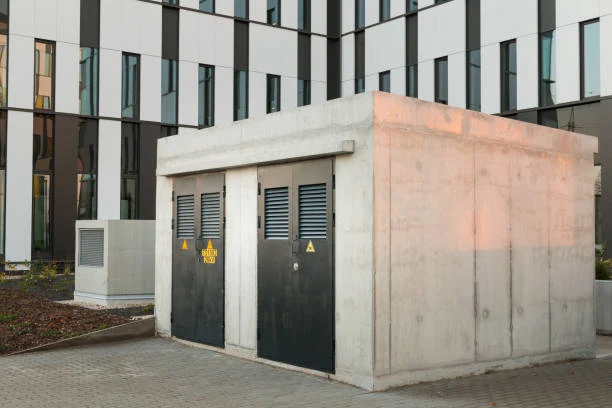
Power stations are also known as power plants or powerhouses.
Moreover, generating power stations or generating plants are industrial facilities that support the generation of electric power.
Most power stations normally consist of one or more generators and even a rotating machine that is able to convert mechanical power to three-phase electric power.
There is an expected relative motion between a magnetic field and a conductor that generates electric currents.
Energy sources that are harnessed to turn the generator will vary.
There are plenty of power stations in the world that burn fossils like coal, naturals gas, oil, etc.
Cleaner sources also include nuclear and as well as increasing use of renewable sources such as solar, wave, wind, and hydroelectric.
Electrical generators are also driven and controlled by human muscle power. For instance, just like in-field radio station equipment.
Bikers of some parts of the world even use bicycles that are connected to a motor and one-way diode just to charge their batteries.
Although generator step-up transformers are the combination of two types, consumers use them for both purposes (stepping up voltages and producing power)
Basically, human-powered generators are widely available and are commonly and have also been in the project of some DIY enthusiasts.
These are also operated by means and pedal power.
Converted bicycle trainers or food pump-like generators are also used to charge batteries, and there are even cases that are designed with an inverter that is specifically integrated.
Most people are able to produce 75 watts or 0.1 horsepower for an eight-hour session.
For athletes, it is estimated that they are producing 298 watts or 0.4 horsepower in the same hour-long session.
This goes to say that undetermined periods of rest and recovery are required as well. 298 watts of an average healthy human can easily get exhausted within 10 minutes of their exercise.
The net of electrical power that is produced will also be less because of the efficiency of the generator.
Even portable radio receivers with a crank are also made to reduce the battery purchase requirements.
You can also see the clockwork radio for this. Back in the mid 20th century, pedal-powered radios were commonly used throughout the Australian outback to provide schooling, medical, and other needs in remote stations and even towns.
Genset is another engine-generator that is the combination of electrical generators and as well as a machine that is a prime mower, which is mounted together to establish a single piece of self-contained equipment.
Most engines are primarily used for piston engines but gas turbines can also be used for this.
There are even hybrid diesel-gas-powered units that are also known as “duel-fuel” units.
Nonetheless, there are various versions of engine generators out there that range from small portable petrol-powered sets to large turbine installations.
The primary advantage of engine generators is the ability to independently supply electricity, this is to allow the units to serve backup power solutions.
As mentioned before, there are basically two types of transformers when it comes to abilities to increase or decrease voltage levels;
These transformers are the step-up transformers and step-down transformers.
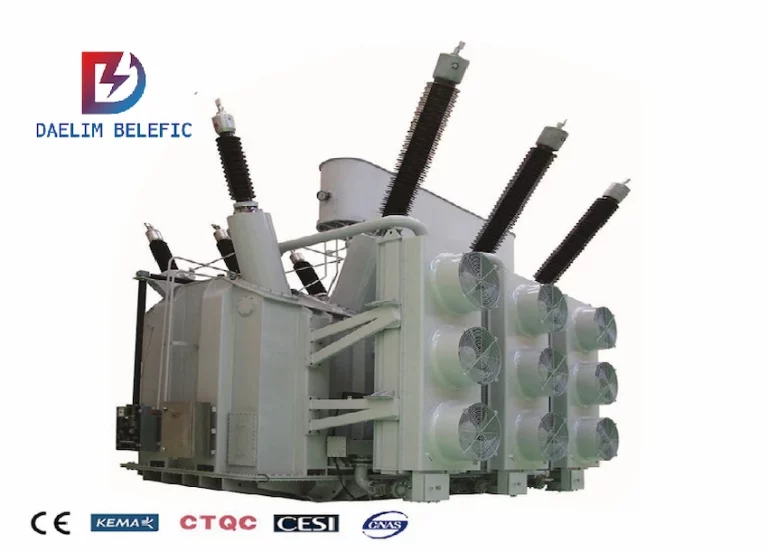
Step-up transformers have a crucial role when it comes to boosting high-capacity electricity that is produced by generators and transmitting it to the grid.
They also have a long track record when it comes to large-scale power sources such as nuclear, coal, fossil fuel, gas turbine generations, etc.
In general, step-up transformers are used for increasing the voltage levels.
Generator step-up transformers fit in this category because the generator step-up transformer configurations and generator step-up transformer specifications match the requirements of step-up transformers.
On the other hand, step-down transformers are basically the opposite of step-up transformers.
Step-down transformers are used to decrease voltage levels from transmission levels to distribution levels.
This means that generator step-up transformers do not fit in the category since the generator step-up transformer configurations and generator step-up transformer specifications do not match the description.
When you need to find more than just existing transformers, Daelim’s Transformer Service Center can help you design and produce distribution transformers that meet your unique needs.
We have our own factory and a professional team of engineers, which can design and modify application requirements that meet all your conditions.
Download Resource
After filling in the contact information, you can download the PDF.